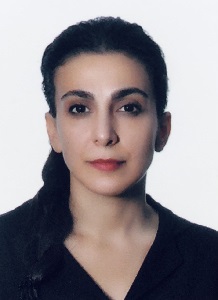Mina Ramezan Jamaat

Mina Ramezan Jamaat
· 2021-2024: Scholarship holder of the Gerda Henkel Foundation in Germany
· Since 2019: University of Vienna, doctoral studies in Islamic art history
· 2015-2017: Negārestān Museum-Garden, Tehran, Iran: Researcher
· 2010-2013: Moqaddam Museum and Negārestān Museum-Garden, Tehran, Iran: Museum guide and researcher
· 2010: Scientific collaboration with the Cultural Heritage Organization of Tehran Province
· 2009: Scholarship holder of the Tehran Center for Studies and Urban Planning, integrated into Tehran municipality
· 2007-2010: Tarbiat Modarres University, Tehran, Iran: MA degree in Islamic archaeology
· 2005-2006: National Museum and Ābgineh Museum, Tehran, Iran: Museum guide
· 2003-2007: Tehran University, Iran: BA degree in archaeology
Research interests: Islamic art history, with a focus on the Qajar period of Iran in the 18th and 19th centuries; Art history of Iran, emphasizing visual art and iconography; Study of Islamic architecture, particularly focusing on the 16th to 19th centuries in Iran
Current research project: The Royal Reception Ṣaf-e Salām in Wall Paintings and Images in the Early Qajar Period in Iran (1797-1834)
The lengthy reign of Fatḥ-ʿAlī Shāh, the second king of the Qajar dynasty, from 1797 to 1834, marked a period characterized by deep interconnections between politics and art. During this era, art served as a pivotal medium for legitimizing the Qajar court, achieved through its association with Iran's rich historical heritage and extensive governmental propaganda efforts. This convergence of art and politics under Fatḥ-ʿAlī Shāh's rule constituted a turning point in Qajar-era art. Amidst the ever-evolving depictions of royal authority, the theme of “Ṣaf-e Salām” held particular significance. The Persian term Ṣaf-e Salām, composed of “ṣaf” (row) and “Salām” (greeting), symbolized a hierarchical formation of respect towards the king, prominently featured in the grand celebrations of Fatḥ-ʿAlī Shāh's reign. However, scholarly research on the royal receptions of Salām and the various manifestations of Ṣaf-e Salām remains limited within the field of Qajar art history.
This work, based on source research, field and archival research, comparative discussions, and personal interpretation, aims to address several key questions regarding the ceremonial process of Salām, the motivation and origin of Ṣaf-e Salām works, their prototypes, and how they are influenced by ancient depictions of Iranian rulers. The overarching objective of this discussion is to examine the creation process of Ṣaf-e Salām artworks, considering their temporal and spatial relationships, and to interpret the structural and visual elements within these idealized images in comparison to real ceremonies and court art from previous eras.
Publications:
- Divārnegāreh-ye „Ṣaf-e Salām-e Fatḥ-ʿAli Shāh“. Barrasi-ye Tārikhcheh va Mojudiyat-e Aṯar az ʿEmārat-e Divāni-ye Qom tā Bāgh-e Negārestān-e Tehrān/The Wall Painting “Ṣaf-e Salām” of Fatḥ-ʿAli Shāh. Research on the history and creation of the artwork, from the courtly residence in Qom to the Negārestān Garden in Tehran, Tehran 2019.
- with Mosṭafa Deh-Pahlavan, Bāgh-e Negārestān. Az Qaṣr-e Negārestān tā Dāneshgāh-e Tehrān/Negārestān Garden. from Negārestān Palace to Tehran University, Tehran 2013.
- with Javad Neyestani, Jelveh-hā-ye Sonnat va Tajaddod dar Fażāhā-ye Voroudi-ye Khānehā-ye Tehrān-e Doreh-ye Qājār/Effects of tradition and modernity in the entrance areas of Qajar-period houses, in: Honarhā-ye Zibā, 44, 2011, P. 65-77.
